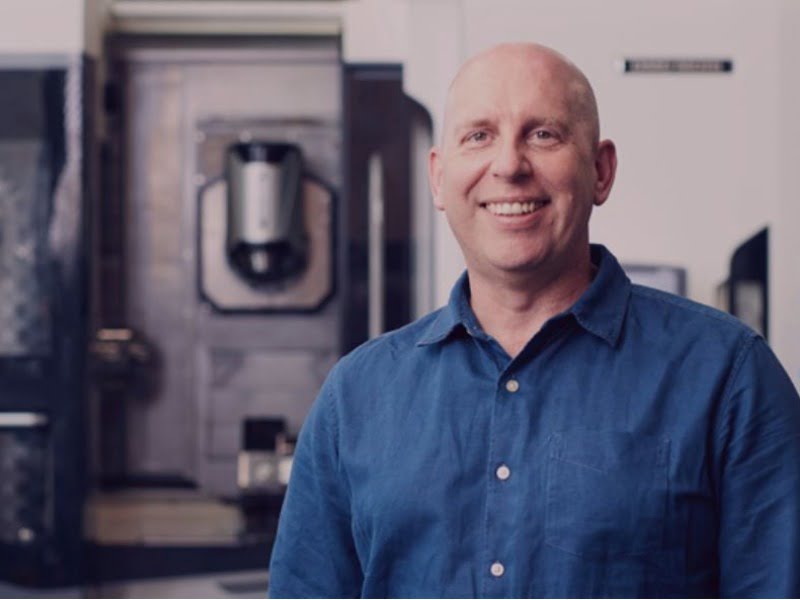Building success: Innovative Manufacturing CRC chief executive David Chuter
There is no doubt that COVID-19 has plunged our country, and the world, into economic chaos. The impact of the virus has truly challenged the old order and we are being forced to decide what we want the future of Australian manufacturing to look like.
As the fourth largest industry in Australia, manufacturing is critical to rebuilding the health of our economy.
Industry Minister Karen Andrews has recently stated that although COVID-19 highlighted a number of serious sovereign capability gaps, total domestic self-sufficiency shouldn’t be the goal for our future. I agree and believe instead we must mature those niche opportunities that draw on Australia’s own resources and R&D strengths and focus on the manufacturing and broader industrial races we can win, both locally and globally.
This will take inward focus but critically also outward reach. It requires balancing short-term critical initiatives with longer-term strategic needs and will rely on businesses, research organisations and governments working together to increase our industrial capability and capacity.
Manufacturing needs to be recognised as its own vertical industry sector as well as a horizontal key enabler for most primary Australian industry sectors. It plays a crucial role in facilitating technologies, supply chains, accelerating digitalisation and Industry 4.0 (as well as associated new business models) for many industries in Australia.
This shift in understanding will ensure manufacturing is given the correct attention and resources to rebuild and renew – critical, in my view, to ensuring Australia is well positioned to invest in and win the races that matter for our future prosperity.
So, where should our focus lie? The 2019 CSIRO NAB Australian National Outlook provides a compelling outlook vision for a thriving Australia in 2060, with key building blocks being both a national industrial shift and significant investment in manufacturing growth.
It highlights, for instance, healthcare, cyber security, mining, metals, construction, food manufacturing and hydrogen as sectors with potential to strengthen Australia’s competitive advantage.
Once we have identified the critical areas on which to focus our manufacturing time, effort and resources, we need a clear strategy on how to achieve success.
A new National Industrial Strategy Commission, called for by many of my peers in the industry, would help provide this direction and grow these industries of the future with new technologies and business models. I believe there are four key drivers that must be included in such a strategy.
First, we need to mobilise Australia’s small and medium manufacturers (SMEs) and lift their leadership and management capabilities. SMEs make up the majority of most industry sectors in Australia and we need to highlight what good leadership looks like in a fast-moving, rapidly digitalising world.
By instilling an entrepreneurial mindset and identifying innovative but practical ways for them to develop new products and services, SMEs can and should become the driving force behind building a thriving, relevant and resilient manufacturing sector and the accelerants for the “races we can win”.
Effective collaboration across all business sizes will be also be critical in achieving a sustainable manufacturing future. We know peer-to-peer learning works and recent local mask and ventilator initiatives have demonstrated we already have the skills and know-how.
Collaboration with our neighbours in New Zealand may also provide rewards, particularly when seen through the lens of industry sovereign capability and needs.
It will be essential to focus on breakthrough innovation – as distinct from invention – that reshapes business models and creates new products and services that can be sold locally and internationally.
Key to this is the rapid adoption in Australia of digital manufacturing technologies and the uptake of Industry 4.0 and associated business models. This will be critical to delivering much needed step changes in competitiveness, while enabling superior value to be both captured and created.
Finally, purposeful research in science and technology, including frontier technologies, will be important. We have an abundance of academic resources that need to be better utilised within a clear vision and targeted approach. This will help mitigate the current challenges exacerbated by the duplication of resources and fragmentation of incentive programs.
To truly rebuild the health of the economy, we must create sufficiency of capability, scale and the future of work. A scattergun, widespread approach will not, in my opinion, achieve this.
We need manufacturing – and industry generally – to be attractive to investors, businesses, researchers, government, current and future employees and to the community. And we need this attraction to be both local and from overseas to insure and assure our future relevance and economic prosperity.
Having clear, long-term direction and areas of growth for the industry to focus on, with manufacturing front and centre to design, engineer, make and service, as well as to enable and lead, will help Australia win those races that we so desperately need to.
David Chuter is the Chief Executive Officer and Managing Director of Innovative Manufacturing Cooperative Research Centre (IMCRC)

